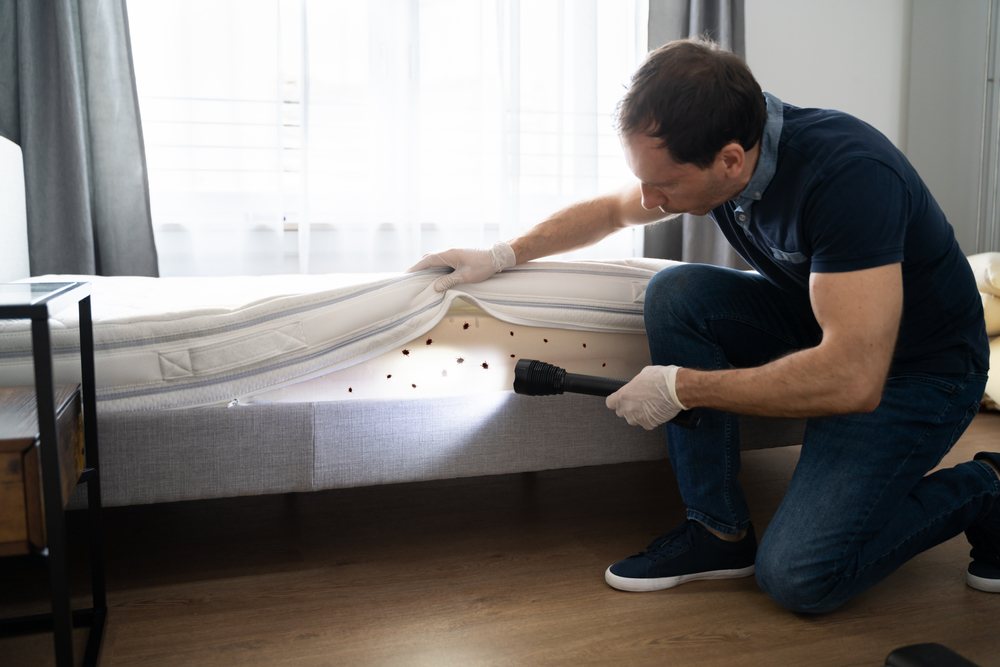Bed bugs are a nasty problem.
A problem that, within a moment’s notice…
Will uproot your entire life, and disrupt your daily activity until properly addressed.
The symptoms can be difficult to treat, and the signs can be hard to detect.
If you’re waking up with skin irritation.
Or you suspect that things are crawling on you at night.
It’s natural to wonder…
How Can I Tell if I have Bed Bugs?
Detection is the first step to removing an infestation, and bring the lives of you and your family back to normal.
That’s why we’re going to discuss EVERYTHING you need to know to determine where or not you have a bed bug infestation.
On that note… Let’s dive in.
Page Contents:
Can You See Bed Bugs?
Adult bed bugs are absolutely visible to the human eye…
To those who are observant.
Since these insects cannot jump or fly, it’s not uncommon to see one of these creatures crawl along the floor.
About the size of an apple seed, adult bed bugs are about ¼ inch to ¾ inches long.

Since they can be seen with the naked eye…
let’s review some of the bed bug physical characteristics in their different life stages…
To help you identify and diagnose whether your home is infested.
Size:
Adults – Up to ¾ inches as mentioned, can make it up to 1 inch after a large feeding.
Nymphs (babies) – about the size of a pinhead. Around 1/8 inch long.
Color:
Adults – Adult bed bugs are mostly brown, but they get a more reddish tint just after a meal.
Nymphs – Either brown or off-white, depending on whether they’re still eggs or if they just hatched.
Shape:
Adults – Mostly flat, but they become engorged and balloon to a more oval shape after feeding.
Nymphs – Very small and flat
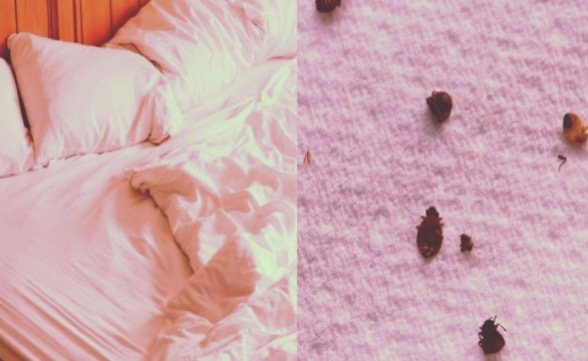
Smell:
In most cases you won’t smell bed bugs unless you’re experiencing a severe infestation.
The scent gland within a bed bug releases a pheromone called histamine.
(This is how bed bugs communicate)
When a fair amount of this pheromone is released, your home can start to smell like moldy clothes or an old locker room.
Some people describe it as a mix between coriander and worn out shoes.
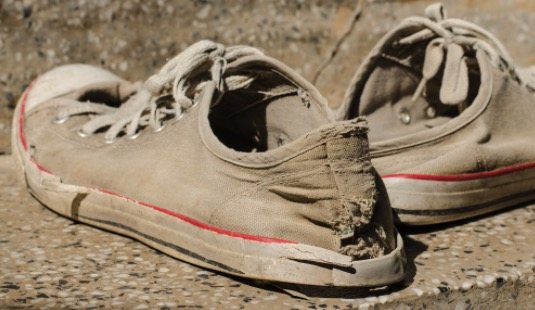
Let’s just say… it’s not a pleasant smell.
Biology:
Bed bugs have six legs (unlike similar insects)
Their biology naturally promotes infestation, as they reproduce FAST.
Female bed bugs can lay up to 12 eggs per day and can get to an average of 600 eggs in their lifetimes.
They can reach from nymphs to adulthood in about a month, going through 5 molts (shed skin) during that period.
Nymphs require more feedings in order to survive…
So early action on an infestation is critical so that nymphs do not survive.
How to Tell if You Have Bed Bugs on You
Bed bugs are often mistaken by other insects.
This becomes an issue because different bugs require different methods of extermination.
First if all…
If you do see insects on you during the day, you can rest easy that it’s probably not bed bugs.
For 2 reasons:
- Bed bugs only feed at night. They’re nocturnal and prefer to feed when their hosts are asleep in their beds.
- You typically won’t find bed bugs on your body (except in rare cases). Bed bugs will come feed on you for 5 to 10 minutes, and then go back and hide so they can digest.
If you’re feeling skin irritation and experiencing itchy bites, it’s natural to wonder If those were from bed bugs.

Maybe bed bugs aren’t on you now…
But were they at some point?
First Step: Identify Bed Bugs Bites
Your skin’s reaction to a bed bug bite will likely be what 95% of people experience.
Bites almost always cause:
- Red bumps (about the size of a penny).
- Typically welts that are in a zig zag or linear pattern.
- You will see bites in clusters in certain areas of your body.
In certain cases you may experience more intense skin reactions.
These can include:
- Natural allergic reactions
- Hives
- More intense symptoms such as itching or burning

Make sure you avoid scratching when possible or it can lead to blisters and a possible infection.
Click here to better understand what bed bug bites look like.
What is Biting Me at Night if Not Bed Bugs?
If you’re not experiencing any of the above-mentioned symptoms…
You could be experiencing a different type of bed bug.
Lets review:
Cimex Lectularius: The common household bed bug.
(found worldwide)
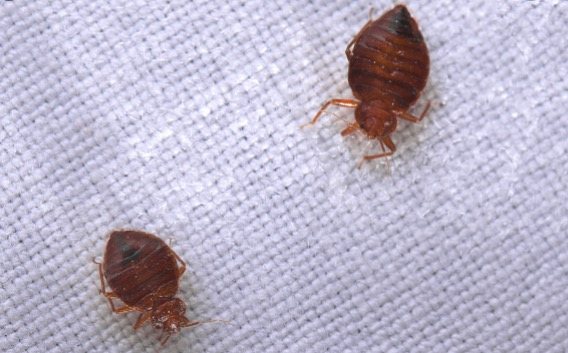
These insects adapt well to human environments and live in temperate climates.
Because a number of other bugs are related in habits and appearance…
Proper observation is required to distinguish these insects from other species.
Cimex Hemipterus: The tropical bed bug.

These bugs also feed on humans but live in warmer, more humid climates.
Infestations of this type of bed bug are widely reported in Florida.
Cimex Adjunctus: The bat bug.
These insects are often confused with bed bugs. They’re also observed in more tropical regions.
(as well as temperate areas)
This species feeds primarily on bats, although there are cases where they have fed on human hosts.
Click here for more information about bat bugs, and how they’re confused with bed bugs.

How to Tell if You Have Bed Bugs or Mites?
Though dust mites and bed bugs are often confused, they’re actually very different creatures.
There are more than 46,000 species of dust mites…
Yet still some commonalities in their physical appearance.
Adult dust mites are about the size of baby bed bugs, 1/8 inch thick.
Some species of mites are actually so small…
They can ONLY be seen with a microscope.
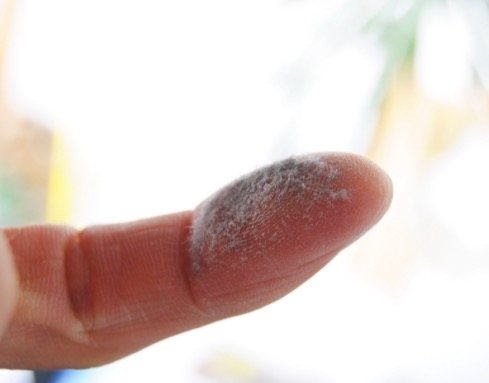
How About Location?
Unlike dust mites, bed bugs are found in the following areas:
- Your bedding (sheets, pillows, comforter)
- Folds of your mattress
- Inside the box spring
Mites on the other hand prefer other areas.
Though it varies between three main species:
- Bird Mites: These creatures prefer to feed on the blood of birds or rodents. Though they will bite humans if their host animal dies. They typically are found inside walls or in your attic/basement.
- Clover Mites – While this species doesn’t bite humans, these creatures are frightening because up to 3,000 can enter your home at one time.
- Dust Mites – These mites do not feed on humans, but their bodies, and feces, can become airborne and inflame allergies. These creatures will live in your bed or upholstered furniture.
Neither Mites nor bed bugs, are known for carrying infectious disease.
In rare circumstances there are cases of mites passing disease, but for the most part severe symptoms involve allergic reactions.
Click here more information on bed bugs and their relation to infectious disease (such as COVID-19).

How to Tell if You Have Bed Bugs or Fleas?
While both bed bugs and fleas are parasites…
And require warm blooded hosts to survive…
Fleas tend to target animals while bed bugs prefer humans.

Though these insects will cross over in what their victims are, this distinction helps tell them apart.
(Note: in rare cases bed bugs do attack pets. Click here to learn more).
The life stages and reproductive habits of these two insects are also very different.
How long do these insects each Live?
Fleas will only live about two weeks without a host, while individual bed bugs can live up to a year without food in some cases. Especially when bed bugs become dormant.
How fast can they reproduce?
One flea can lay up to 300 eggs per week, while a female bed bug can lay up to 50 eggs per week.
(Only around 200 in their entire lifetimes).
Do both of these insects spread disease?
Bed bugs are not known to pass on pathogens that result in infectious disease. Fleas on the other hand are known for spreading disease such as typhus, or the plague.
So How do you tell Bed Bugs and Fleas apart?
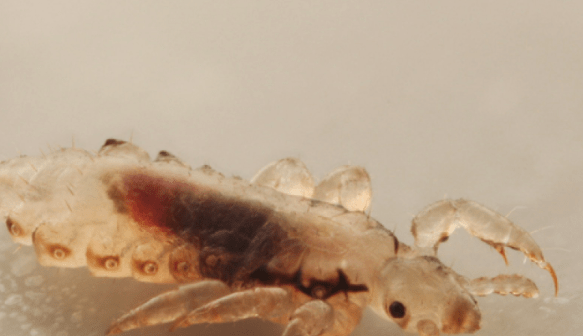
Here are some of the differences in physical characteristics between these two insects:
Size:
Fleas are smaller ranging from 1mm to 3mm long.
Shape:
Bed bugs are flat, while fleas are a skinner, longer oval shape.
Bites:
Flea bites look like a cluster of dots…. That usually occur more on the lower body.
Bed bug bites are raised welts that are more likely to occur on the upper body such as the arms and neck.
Can Bed Bugs get in Your Car?
Though bed bugs are more commonly found in the home, there are instances where they can infest other places.

A major pest control company in New York broke down the top 10 places they treat for bed bugs by percentage.
- 40% Single Family Homes
- 18% Apartments
- 15% Hotels
- 8% Used Furniture Stores
- 5% Hospitals
- 5% Schools
- 3% Movie Theatres
- 3% Public Transportation
- 2% Nursing Homes
- 1% Other
Bed bugs attach themselves to clothing or other personal belongings, which is the primary way that they spread.
If you visit one of the above places that’s infested…
(and you travel by car)
There’s a chance your car could become infested as well.
Before you jump to treatment options, you should properly inspect your car to confirm the infestation exists.
Clean the interior of your vehicle and remove excess clutter that could hinder your ability to spot a bed bug.
An easy way to detect bed bugs in your car is by using duct tape.
Check out the video below on how to go about this.
Once you confirm the infestation…
You can use any of these DIY methods to remove it from your car, which include:
- Vacuuming (with a certified HEPA filter)
- Using a steamer
- Or with Diatomaceous Earth.

Luckily, there are a number of safe and effective treatments for removing bed bugs from your car.
Can Bed Bugs Look Like Pimples?
There are several different types of pimples, spots where excess oils and skin cells become trapped in your pores and start to pool.
While chiggers and flea bites are more commonly confused with pimples, bed bug bites can be mistaken for these as well.
Here are some of the similarities between bed bug bites and pimples:
- Typically, bed bugs are bigger than pimples, but it largely depends on the person. It also depends on your affinity to scratch and cause inflammation or blistering. In general, there is NO one size fits all with a pimple, so size can be a misleading way to tell the difference between the two.
- Both appear in clusters. When it comes to an outbreak of acne or a number of bed bug bites, they both tend to appear in bunches.
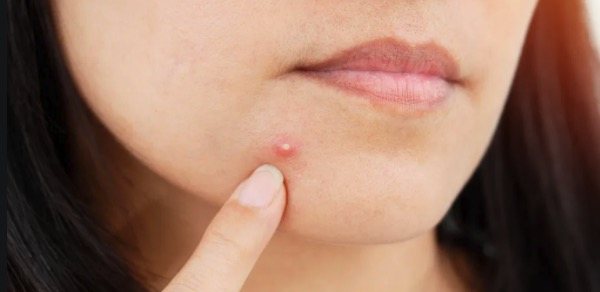
The main way to tell the difference between the two is the location of the bite.
Pimples generally show up in areas of the skin that have the most sebaceous glands, where there is a lot of skin oil.
These locations include your:
- Forehead
- Nose
- Cheeks
- Chest and upper back
Therefore, if you’re waking up with bumps that are outside of these areas, it’s likely that you’re experiencing insect bites.
To determine if those insect bites are in fact bed bugs…
Click here for everything you need to know about what bed bug bites look like.
Freaking Out About Bed Bugs?
When the warmer seasons come around, so do the bed bugs.
If you live in a big city where bed bugs tend to run rampant…

It’s likely you or someone you know will have an experience with them at some point.
After you spent enough time with irritated skin, failed treatments, and numerous expenses, it’s easily to feel like you’re going insane.
Bed bugs infestations take up a lot of time and cost a lot of money…
It’s key that you stay calm and don’t succumb to the many psychological effects of bed bugs.
Keep in mind that…
If you experienced bed bugs in your apartment, hotel, or other temporary residence.
You may have a case for financial compensation.
Get in touch for a free consultation with a lawyer who can talk you through your options.
